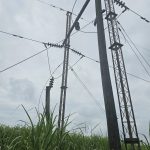In this version, the number of dengue cases have been updated based on Sept. 23, 2024 PESU data. Also, estimated budget for seven line items in the proposed P26 million QRF provided. (10a.m. 23 September 2024)
MALAYBALAY CITY (BukidnonNews.Net/22 September 2024)—Ten-year-old Jenn* developed a fever on June 18. Treated with paracetamol for three days, her condition worsened with abdominal pain on days four through six. After being admitted to the hospital on June 24 around 8 a.m., she passed away just 45 minutes later.
Another child, Jon-jon*, a four-year-old also from Brgy. Casisang succumbed to dengue fever just a month later. His symptoms began with a 39-degree Celsius fever on July 26. Though the fever subsided the next day, he experienced a resurgence on the third day, accompanied by stomach discomfort, vomiting, and greenish watery stools. He was brought to a hospital on July 29 but due to shortness of breath, was transferred to another facility the following day. His condition deteriorated rapidly, leading to intubation and unstable blood pressure. “Jon-jon” passed away on July 31.
Attacks all age groups, mainly children
As of September 23, 2024, there were a total of 33 persons who died out of the 7,815 infected cases in the province, according to the Provincial Epidemiology Surveillance Unit. The most affected age group is ages 1-10, where “Jenn” and Jon-jon” belonged – comprising 47.20% or one out of two, based on the PHO report. Of the total cases, 13.37% are from Malaybalay and 12.96% from Valencia cities, the top two localities with the highest number of cases. More than half of the cases (51.17%) were male.
The Provincial Health Office declared dengue fever, a viral infection that spreads from mosquitoes to people, to have exceeded the five-year epidemic threshold, caused alarm and triggered the Provincial Government’s declaration of a state of calamity last month and the authorization to release P26 million quick response fund (QRF).

Gold colored blocks indicate current year number of dengue cases shown surpassing epidemic thresholds (in red curve) in most of the weeks of 2024 so far.
Source: Provincial Epidemiology Surveillance Unit
Nationwide, the Department of Health has reported a 68 percent rise in Dengue cases from Jan. 1 to Sept. 6 from 124, 157 cases in the same period in 2023 to 208,965 this year, as quoted from an ABS-CBN News report. The case fatality rate in the Philippines is reported to be lower at 0.26 percent compared to the CFR of 0.39 percent for the same period in 2023.
The Bukidnon Provincial Disaster Risk Reduction and Management Council has adopted the decision of the Provincial Health Board to recommend the declaration of a state calamity to enable the province to use quick response fund as augmentation to control dengue cases, said Mr. Israel Johan M. Damasco Jr. in his statements before the Sangguniang Panlalawigan.


The provincial board readily approved the PDRRMC and PHB proposed resolutions as of August 27, 2024 with the SP Resolution no. 2024-4109, which embodied the declaration of state of calamity. At the same time, the SP authorized the Provincial Capitol to release the P26 million quick response fund (QRF).
What for?
Dr. Gary Guido C. Tabios Jr, Provincial Health Officer, outlined the proposed P26 million allocation on August 27, 2024. As presented at the Sangguniang Panlalawigan, the funds will target Health Education for Prevention of Dengue (P1 million), Conduct of Vector Surveillance (P1 million), Conduct of Fever Surveillance (P3 million), Procurement of Supplies for Vector Surveillance (P1 million), Procurement of Commodities for Vector Control (P5 million), Procurement for Dengue Management (P12 million), and Emergency Hiring of Job Orders (P3 million).
Tabios specified the expenses will include costs for public information campaigns, test kits for rural clinics, lab supplies, chemicals, and creation of dedicated dengue lanes in hospitals. Notably, P3 million is allocated to hiring 25-30 job order nurses for three months.
According to RA 10121, at least 5% of regular revenue must be allocated to the LDRRMF for disaster risk management. This includes training, equipment, supplies, post-disaster activities, and calamity insurance. 30% of LDRRMF funds should be set aside as a Quick Response Fund (QRF) for immediate relief and recovery efforts in disaster-stricken areas.
An official source said almost a month after, the detailed budget breakdown of the P26 million fund has yet to be approved.
Unusual
Awareness of government response is important for Rina, whose 54-year old mother got infected recently. She told BukidnonNews.Net that clear and targeted information dissemination is important. She claimed that information on dengue incidence did not reach them on time. She noted, however, that dengue today already has unpredictable symptoms.
“Dili na usual nga symptoms. Di ba on and off fever man to? Karon di naka mag fever. Mag sakit ra gyud imong lawas” (The symptoms are no longer usual symptoms. Before, you will detect if you have an on and off fever, right? Now you will not have fever, you just feel you are ill),” she added.
Also, she noted that maybe staff came to inform about dengue but they were at work. She said her mother, one of 128 persons with ages 51-60 who were reported to have been infected with dengue in Bukidnon, only had fever later. She initially just had body malaise and rashes.
Though almost 50 percent of the cases were from ages 1-10, Dengue has affected all age groups. About 244 cases were reported infected for less than 1 year old; there were 2,284 cases for ages 11 to 20; about 715 for ages 21 to 30; about 356 for ages 31-40; about 200 for 41 to 50; about 128 cases for 51 to 60; and 147 for 60 and above.
The topnotchers are Malaybalay and Valencia cities, with 1,045 and 1013 cases, respectively as of Sept. 19 for highest number of cases. Pangantucan is third with 756 cases and Manolo Fortich, fifth, with 646 cases. Rina’s family is from Maramag town, which has the fourth largest number of cases at 6662 so far this year.
In Malaybalay City, the highest dengue incidence is in Brgy. Casisang, with 228 cases, including “Jenn” and “Jon-jon”. Brgy. 9 came next with 77 cases and Brgy. Kalasungay follows closely at 76.

CONTRIBUTING FACTORS
Engr. Florissa Adviento, Provincial Environmental and Occupational Health Program Manager at the Provincial Health Office told KBP Interaction on September 1, 2024 that the top contributing factor behind the increasing number of dengue cases is environmental.
She said it has been scientifically established that dengue has been identified as one of the diseases exacerbated by climate change. According to the World Health Organization, the rise in the number of reported cases of dengue in more countries is explained by the fact that infected mosquitoes now thrive in more countries because of global warming associated with rising emissions.
“Climate change has an impact in dengue transmission because it increases rainfall, humidity and temperature,” said Dr. Diana Rojas Alvarez Alvarez, a WHO expert. “These mosquitoes are very sensitive to temperature.”
Adviento noted that population density increases dengue risk due to waste accumulation and poor sanitation. She also highlighted the challenges of limited water access in Bukidnon, where only 40-50% of barangays have reliable 24/7 water supply. She said most of the barangays still belonged to the Level 1 and 2 water service access.
“This means people will really have to use containers to store water during hours when faucets run dry,” she told the radio program airing via DXDB Ang Bandilyo.
Adviento added that while the province’s humid climate is a boon, it is also a bane as it is conducive for mosquito breeding. She said the best time to combat dengue is during its larvae state, urging all households to implement measures to control breeding.
Provincial Sanitation Inspector Sergio S. Flores of the Bukidnon Provincial Health Office said the rise of dengue cases was not nipped in the bud or stopped with early detection.
“Supposedly, when a case is detected in the barangay or sitio, it should cause an alarm already in the barangay,” he added. Now, he said, they need to work double or triple time to control dengue.
5S Strategy
The Provincial Health Office has urged the public to “intensify our fight against dengue”. In social media, they have pushed for weekly clean-up drives within each barangay to eliminate potential mosquito breeding sites and reduce the risk of dengue transmission.

Valencia City Health Office personnel work with officials and personnel of Brgy. Laligan, Valencia City, Bukidnon during a fogging activity to stop the spread of dengue fever. Courtesy of Barangay Laligan FB
They have reiterated the 5S Strategy of searching for and destroying mosquito breeding sites, self-protection against bites, seeking early medical consultation for dengue symptoms, supporting fogging activities, and sustaining hydration. The PHO has urged for simultaneous Search and Destroy Operations and support fogging activities.
Where to?
The City of Malaybalay has already indicated it will no longer declare a health emergency as the number of dengue cases is decreasing, said Dune Berlyn Libetario of the City Health Office. The city’s 1,009 cases as of Sept 13 is below the five-year epidemic threshold of 1,453 in 2019.
Provincial Board member Nemesio Beltran Jr. told BukidnonNews.Net that the provincial declaration of state of calamity covers all local government units in the province down to the barangays. “They don’t need to declare at their level.”
Rina, a middle-age office worker whose 54-year-old mother was infected with dengue recently, said that maybe government programs to prevent and control dengue incidence are already put in place.
But implementation just had to be intensified, she said. In their community, she added, the people have not been fully mobilized against dengue.
“Maybe house to house monitoring for sanitation worked before and could work now,” she said in the vernacular. (Walter I. Balane/Reporting Sustainable Development Goals Project)









